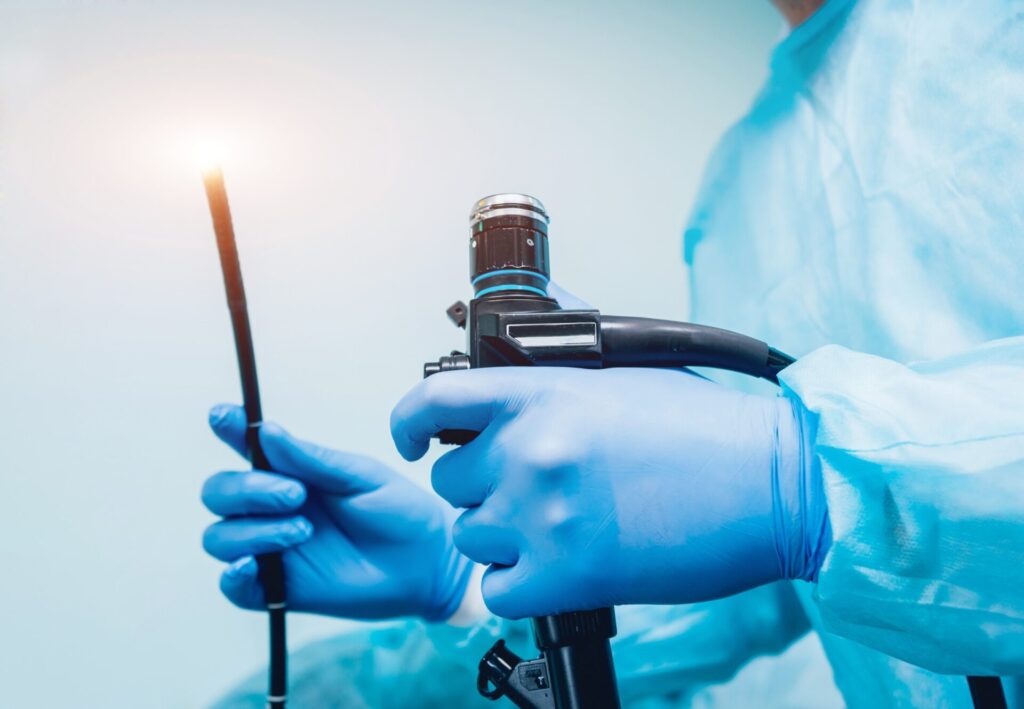Home / Endoscopy
Synthetic sapphire allows for clear visualization of internal body structures and tissues during medical procedures which is crucial for endoscopy

The Challenge
In endoscopic surgery, synthetic sapphire lenses are employed in endoscopes, which are used to visualize internal organs and perform minimally invasive procedures. The optical clarity of sapphire enhances image quality and ensures minimal distortion.
Commonly used materials such as plastics like Acrylic and Polycarbonate to make lenses for endoscopes likely lead to poor performance due to the limitations of the chosen materials. The reprocessing of endoscopes and the associated costs should be areas of concern or those looking to mitigate contamination issues along with enabling an optimized cost of ownership.
One of the largest complications with camera-guided endoscopes is avoiding the buildup of blood and other bodily fluids around the camera lens, which can often obstruct the view during many critical procedures. Endoscope materials have to endure multiple procedures, but also the standard sterilization procedures that endoscopes go through between uses.
The Solution
Synthetic sapphire is a highly valuable material in various medical applications due to its exceptional properties. Sapphire is a form of crystalline aluminum oxide (Al2O3) and is produced in laboratories rather than being mined from natural sources. It possesses several characteristics that make it ideal for medical use. A comprehensive review of the various types of synthetic sapphire and properties can be found here.
Synthetic sapphire has excellent optical clarity and high light transmittance in the visible and near-infrared (NIR) spectra. It can provide clear, high-resolution images with minimal distortion. It is extremely hard and scratch-resistant, making it highly durable. It can withstand abrasive environments and maintain its optical clarity over time.
Sapphire has excellent thermal stability and can withstand high temperatures without deformation or degradation. Endoscopic reprocessing is a crucial aspect of maintaining the safety and effectiveness of endoscopic procedures. Proper reprocessing helps prevent the transmission of infections between patients and ensures that endoscopes are in optimal working condition. This is where synthetic sapphire lenses outperform polycarbonate and other traditional lens materials. The advantages include exceptional hardness, optical clarity, high temperature resistance, chemical resistance and durability.
The Benefit
The choice between lens materials for endoscope applications depends on the specific requirements of the endoscope, including optical performance, durability, flexibility, and cost considerations. Synthetic sapphire offers superior optical clarity and scratch resistance. Synthetic sapphire should be at the top of a designer lists and the design should align with the intended use and design of the endoscope.
Overall, synthetic sapphire’s combination of optical clarity, scratch resistance, and sterilization compatibility makes it an excellent material for enhancing the performance and longevity of endoscopic equipment. Its use in endoscopy allows medical professionals to perform minimally invasive procedures with clear and precise visualization, leading to improved diagnostic accuracy and patient outcomes.
At Analytical Components LLC, we focus on the critical finishing, processing and fitment of the precision sapphire components for endoscope applications.

